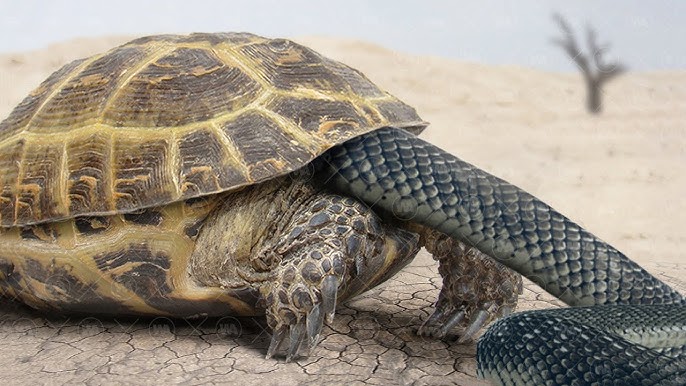
In the delicate web of nature, the interactions between predators and prey often reveal surprising dynamics. Snakes are known to hunt various animals, including turtles, yet certain behaviors displayed by turtles can completely bewilder their would-be predators, forcing snakes to rethink their approach.

Picture a quiet forest pond, sunlight scattering through the leaves, casting ripples of light on the water. A snake moves gracefully along the bank, its tongue flicking rapidly, sensing the presence of potential prey. Nearby, a turtle basks on a log, seemingly unaware of the predator approaching. Confident in its ability to capture the slow-moving reptile, the snake edges closer with careful precision.
But the turtle does something entirely unexpected. Rather than retreating into its shell or quickly diving into the water, it begins to vibrate its body in a rhythmic, unusual pattern. To a casual observer, it may appear as a simple tremor, yet this behavior is a sophisticated defensive display—a clear signal that even predators must respect.
This remarkable adaptation showcases how the tables can turn in nature. What starts as a hunt may quickly become a lesson in caution for the predator, highlighting the intricate balance and clever strategies that define life in the wild.



